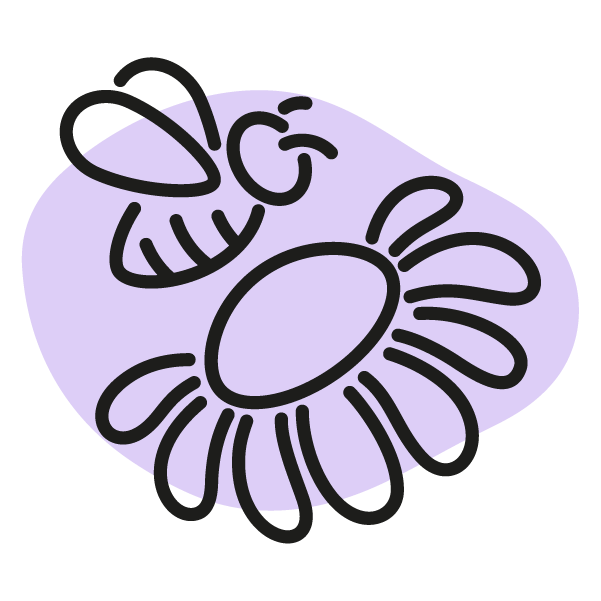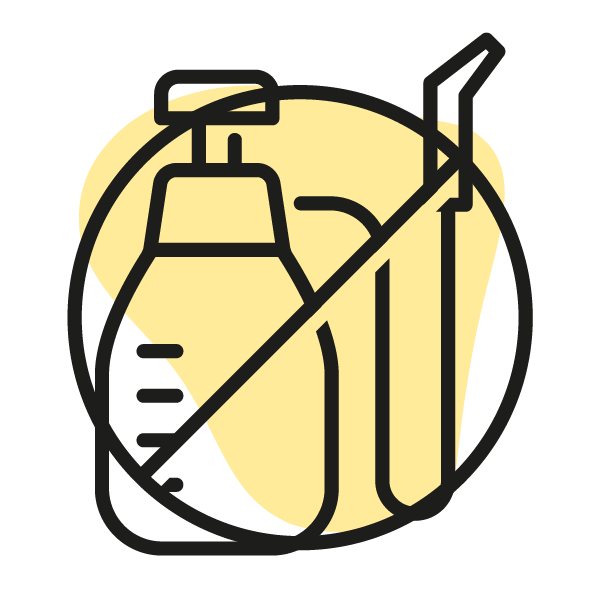10 Ways to Save the Bees
Here are a few easy ways you can help #BeeTheSolution.

1. Support and Preserve Bee Habitats
Habitat loss is a main contributor to pollinator decline. One way to save the bees is to preserve safe spaces for bees and wildlife to feed and nest. Support organizations that have bee habitat and pollinator gardens, such as parks and nature reserves. Replace lawns with pocket wildflower meadows, native gardens, and flowering lawn alternatives. If you don’t have much space, plant bee-friendly blooms in window boxes, flower pots, and mixed into vegetable beds. Check out one way The Bee Conservancy partners with organizations to preserve land and build new habitats.

2. Go Chemical-Free for Bees
Synthetic pesticides, herbicides, and other agrochemicals can harm bees. Minimizing their use, we help maintain healthy bee and other pollinator populations, contribute to biodiversity, balance ecosystems, and mitigate downstream impacts on wildlife and human health. A garden can thrive without these harmful chemicals one goal of a bee-friendly garden is to build a sustainable ecosystem that keeps itself in check by fostering beneficial populations. Learn about how TBC was a key advocate leading up to the passage of New York State’s new Birds and Bees Protection Act, which curbs neurotoxic neonicotinoid (neonic) pesticides.

3. Choose Bee-Friendly Plants
Unfortunately, not all flowers are created equal when it comes to saving the bees. Many blooms at big box and other garden stores have been cultivated for human consumption (aesthetics, hardiness, etc.), often at the expense of pollinator needs (i.e., pollen and nectar amounts, bloom patterns, structural elements). Create rich food sources for bees with pollen- and nectar-rich, native plants where possible, as many bee species have coevolved to feed exclusively on native flowers. If sourcing native plants is difficult in your area, research non-invasive pollinator-friendly alternatives appropriate to your location (and ask retailers to add natives to their plant stock). Learn about the pollinator gardens we help to establish with the Port Authority of New York & New Jersey!

4. Go Underground for Bees
Did you know that 70% of the world’s 20,000+ bee species — including bumblebees — are ground-nesting bees? Create nesting sites for these tunnel dwellers by leaving bare patches of soil where they can build their homes. Avoid mulching these areas, as mulch creates a barrier to accessing their homes. Weed early when unwanted plants pop up to keep spaces tidy.

5. Trees for Bees
When a tree blooms, it provides hundreds — if not thousands — of blossoms for bees and pollinators to feed on. Bee-friendly trees are especially helpful in the early spring months before smaller plants have yet to bloom. In addition, tree leaves and resin provide nesting material for bees, while natural wood cavities make excellent shelters.
![Garden_264978189 [Converted]-02-02 Drawing of the Sun with purple coloring](https://thebeeconservancy.org/wp-content/uploads/2024/10/Garden_264978189-Converted-02-02.png)
6. Let Stems Bee
About 30% of the world’s bees nest in holes inside of trees, logs, or plant stems. The Bee Conservancy recommends providing ample shelter for species like mason and leafcutter bees, whose offspring overwinter in the cavities and emerge the following spring and summer. When your garden dies back, cut pithy plant stems in heights of 18-24 inches to create studio apartments for bees. Leave cut logs outside for species like carpenter bees who will chew homes within them.

7. Always Bee Learning (and Sharing!)
Educate yourself by studying native bee species, their life cycles, and ecological roles through books, scientific papers, online resources workshops, webinars or attending a TBC event. Then, spread the word like pollen within your community to help bee enthusiasts bloom. Understanding pollinators helps people grasp the interconnectedness of ecosystems — especially the role of pollinators in food security. Check out our kids’ activities here, and find tools to inspire the next generation of bee conservationists.

8. Bee a Volunteer
There are so many wonderful organizations working to build a greener planet — and they need your help! By helping with environmental and sustainability initiatives, your work helps make the planet safer for bees. Plant trees and gardens, help remove invasive species, write advocacy letters, collect native seeds, share skills and information with new audiences – the list goes on and on! We have the collective power to make a difference and save our precious ground-nesting and cavity-nesting bees. TBC hosts volunteer days and World Bee Day every year to educate kids and celebrate the importance of bees.

9. Engage in Community Science
Join a global movement to collect data on our favorite pollinators! Community science transforms regular people’s passion and interest into data-driven activities supporting scientific research. By participating in a community science project, you can provide essential insights and local knowledge, which can lead to more relevant and valuable research outcomes. Join our “A Bee Or Not a Bee” iNaturalist project, which invites you to document and upload species on iNaturalist, collaborating with naturalists around the world to determine whether the insect buzzing by is a bee, wasp, fly, or other common bee doppelgänger.

10. Bee Loud and Proud to Support the Bees
Bee the change you want to see through action, action, action. Spread the word on 10 Ways to Save the Bees. Start a community seed library to share seeds of native plants to make them more accessible to your neighbors. Advocate for bee-friendly policies by sharing the importance of bees with local and state governments, signing petitions, and voting to promote environmental and bee conservation measures such as banning harmful chemicals and protecting land.
Your Help is Indispensable to Our Work
Bee populations are critical for ensuring a healthy environment. Please give today to build a healthier, more resilient future for all.